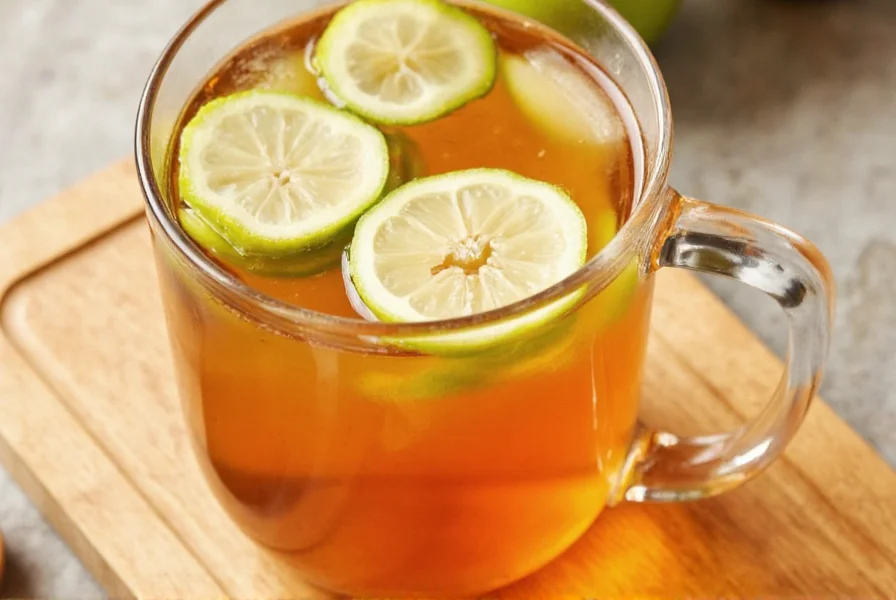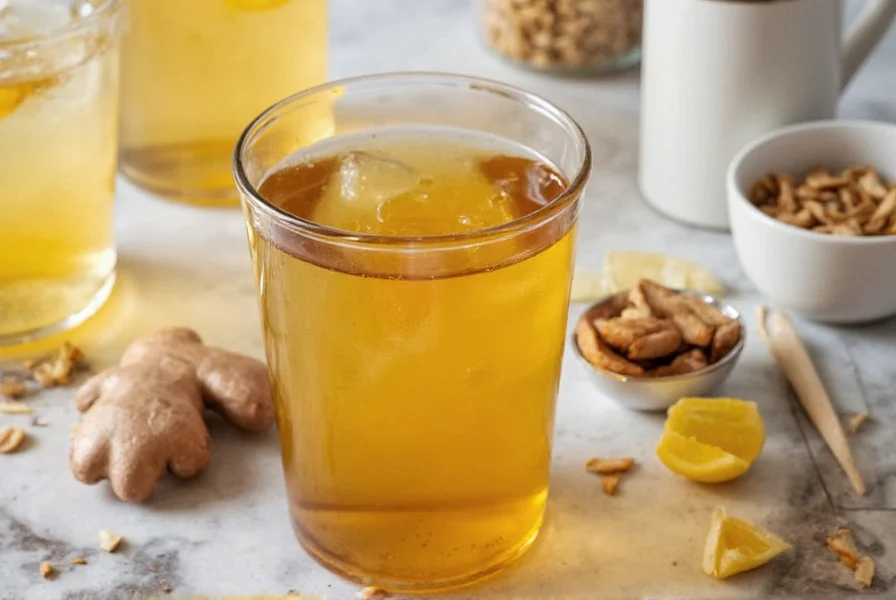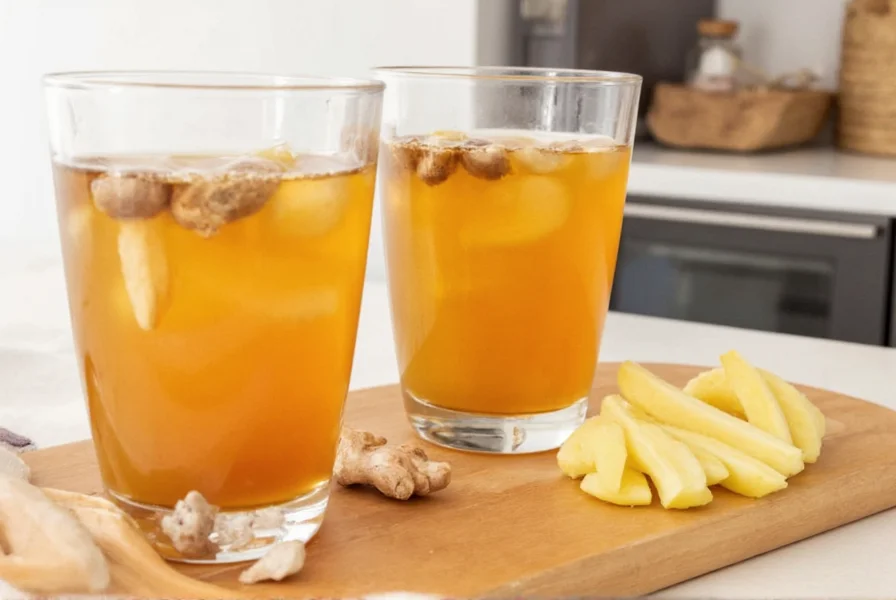Creating delicious ginger tea at home is simpler than most people realize. With just fresh ginger root and water, you can brew a comforting, aromatic beverage that's been enjoyed for centuries across various cultures. Whether you're seeking relief from minor digestive discomfort, looking for a caffeine-free alternative to morning coffee, or simply want to enjoy a warming drink, homemade ginger tea delivers on all fronts.
What makes ginger tea particularly valuable is its versatility. You can adjust the strength to your preference, add complementary flavors, and even prepare it hot or cold depending on the season. Unlike store-bought versions that often contain artificial flavors or excessive sugar, homemade ginger tea lets you control exactly what goes into your cup.
Essential Ingredients for Perfect Ginger Tea
The foundation of any good ginger tea recipe starts with quality ingredients. While variations exist, these core components form the basis of most preparations:
- Fresh ginger root - Look for firm, smooth-skinned ginger with no soft spots
- Purified water - Better quality water improves the final taste
- Optional sweeteners - Honey, maple syrup, or stevia (added after brewing)
- Complementary flavors - Lemon, mint, cinnamon, or turmeric
Professional tea makers recommend using organic ginger when possible, as the skin contains additional beneficial compounds. You'll typically need about 1-2 inches of ginger root per serving, depending on your desired strength.

Basic Fresh Ginger Tea Recipe
This straightforward preparation delivers pure ginger flavor without distractions. It's perfect when you want the authentic taste and potential benefits of ginger in their simplest form.
| Prep Time | Cook Time | Total Time | Servings |
|---|---|---|---|
| 5 minutes | 10-15 minutes | 15-20 minutes | 1 serving |
Ingredients
- 1-2 inch piece fresh ginger root
- 2 cups (16 oz) filtered water
- Optional: slice of lemon or 1 tsp honey
Step-by-Step Instructions
- Peel the ginger using a spoon (this preserves more flesh than a vegetable peeler)
- Slice ginger thinly or grate it for stronger flavor
- Bring water to just below boiling (195-200°F) - avoid rolling boil which can make tea bitter
- Add ginger to hot water and steep covered for 10-15 minutes
- Strain into your favorite mug
- Add lemon or honey if desired, but try it plain first to appreciate the natural flavor
Popular Ginger Tea Variations
Once you've mastered the basic preparation, these variations offer delightful alternatives for different occasions and preferences.
Ginger Lemon Honey Tea
This classic combination provides a bright, refreshing flavor while adding potential soothing properties. The vitamin C from lemon complements ginger's natural compounds, while honey adds sweetness and additional properties.
- Prepare basic ginger tea as above
- Add 1 tablespoon fresh lemon juice
- Stir in 1 teaspoon raw honey after tea has cooled slightly (to preserve honey's properties)
- Great for when you're feeling under the weather or need an afternoon pick-me-up
Spiced Ginger Turmeric Tea
For those seeking additional flavor complexity and potential benefits, this golden variation combines complementary roots.
- Add ½ teaspoon ground turmeric or 1 inch fresh turmeric root
- Include 1 cinnamon stick or ¼ teaspoon ground cinnamon
- Add 2-3 whole cloves
- Include a pinch of black pepper (enhances turmeric absorption)
- Steep all ingredients together for 15 minutes
- Finish with a squeeze of lemon and optional honey

Expert Brewing Tips for Perfect Ginger Tea
Small adjustments can significantly impact your ginger tea experience. These professional tips ensure optimal flavor extraction and enjoyment:
- Water temperature matters - Just-below-boiling water (195-200°F) extracts flavors without creating bitterness
- Steeping time controls strength - 5 minutes for mild tea, 10 minutes for medium, 15+ for robust flavor
- Freshness affects potency - Younger ginger (spring/summer) is milder; mature ginger (fall/winter) has stronger heat
- Grating vs. slicing - Grated ginger releases more flavor quickly; sliced provides gradual infusion
- Don't discard used ginger - Reuse the same ginger pieces for 1-2 additional brews
Troubleshooting Common Ginger Tea Issues
Even simple preparations can encounter problems. Here's how to address frequent challenges:
- Tea is too spicy - Reduce steeping time, use less ginger, or add a small amount of milk or coconut milk
- Not flavorful enough - Use fresher ginger, grate instead of slice, or extend steeping time
- Bitter aftertaste - Avoid boiling water; don't steep too long; remove ginger after optimal time
- Cloudy appearance - This is normal with fresh ginger; strain thoroughly or accept it as part of natural preparation
- Weak aroma - Use organic ginger when possible; store ginger properly in the refrigerator
Storing and Reheating Ginger Tea
While freshly brewed tea offers the best experience, sometimes making larger batches makes sense:
- Refrigerate cooled tea in airtight container for up to 3 days
- Freeze in ice cube trays for longer storage (up to 3 months)
- Reheat gently without boiling to preserve flavor compounds
- Add fresh lemon or honey after reheating for best results
- Consider making a concentrated ginger brew to dilute as needed
Frequently Asked Questions
How much ginger should I use per cup of tea?
For a standard 8-ounce cup, use ½ to 1 inch of fresh ginger root. Adjust based on your preference for strength—½ inch creates a mild tea while 1 inch delivers a robust, spicy beverage. When grating ginger, aim for 1-2 teaspoons of grated ginger per cup.
Can I make ginger tea with dried ginger powder?
Yes, you can substitute dried ginger powder for fresh ginger. Use ¼ teaspoon of powdered ginger per cup of water as a starting point. Keep in mind that dried ginger has a more concentrated flavor, so you may need to adjust to taste. The resulting tea will have a slightly different flavor profile than fresh ginger tea.
How long should ginger steep for maximum benefits?
For optimal flavor extraction and potential benefits, steep fresh ginger for 10-15 minutes in hot water (not boiling). Steeping for less than 5 minutes produces a milder tea with fewer extracted compounds, while extended steeping beyond 20 minutes can create excessive bitterness without significant additional benefits.
Is it better to peel ginger before making tea?
Peeling is recommended to remove any dirt and provide a smoother texture, but the skin does contain beneficial compounds. If using organic ginger, you can wash it thoroughly and leave the skin on. Many tea enthusiasts use a spoon to peel ginger, which removes minimal flesh compared to a vegetable peeler.
Can I drink ginger tea every day?
Most people can safely enjoy 1-3 cups of ginger tea daily. However, those with certain medical conditions or taking specific medications should consult their healthcare provider first. Pregnant women should limit consumption to 1 cup daily after consulting with their healthcare provider. Listen to your body and adjust consumption if you experience any discomfort.











 浙公网安备
33010002000092号
浙公网安备
33010002000092号 浙B2-20120091-4
浙B2-20120091-4